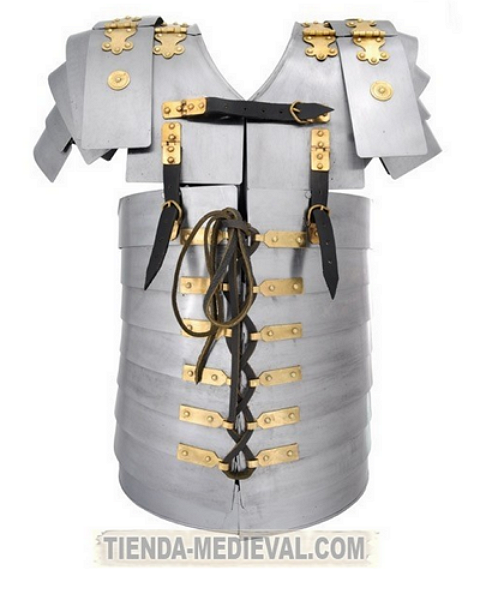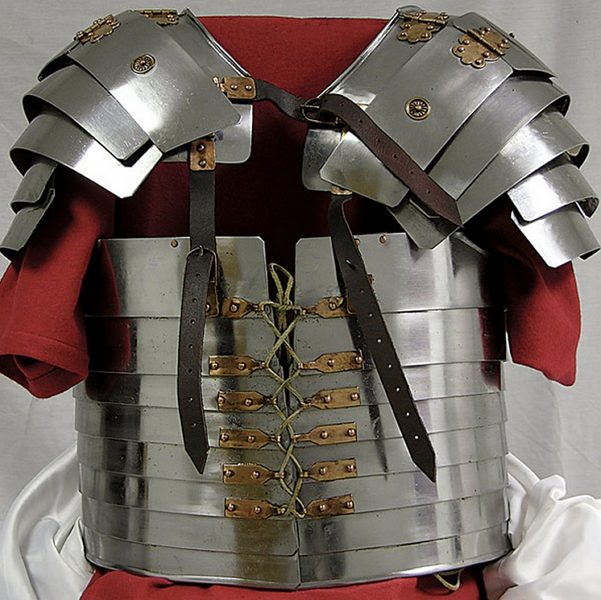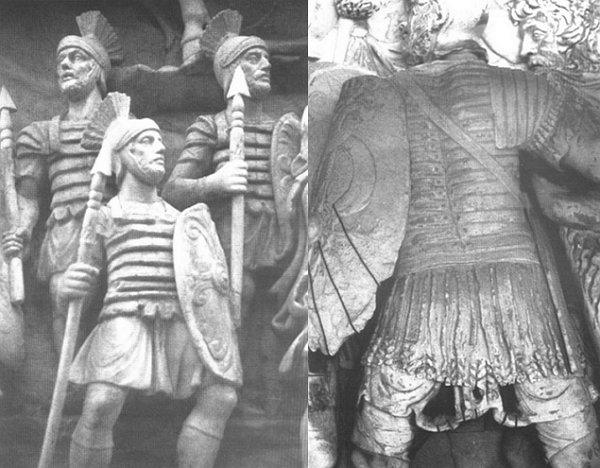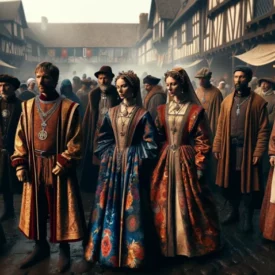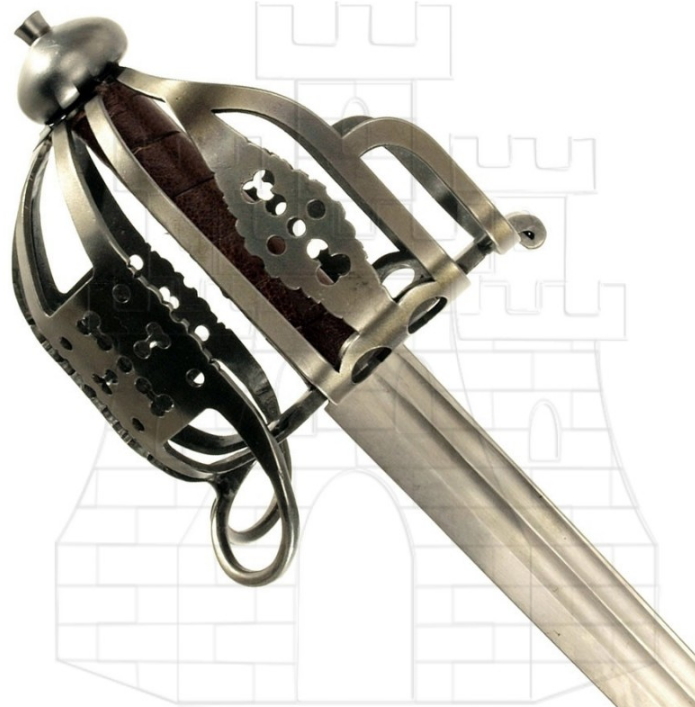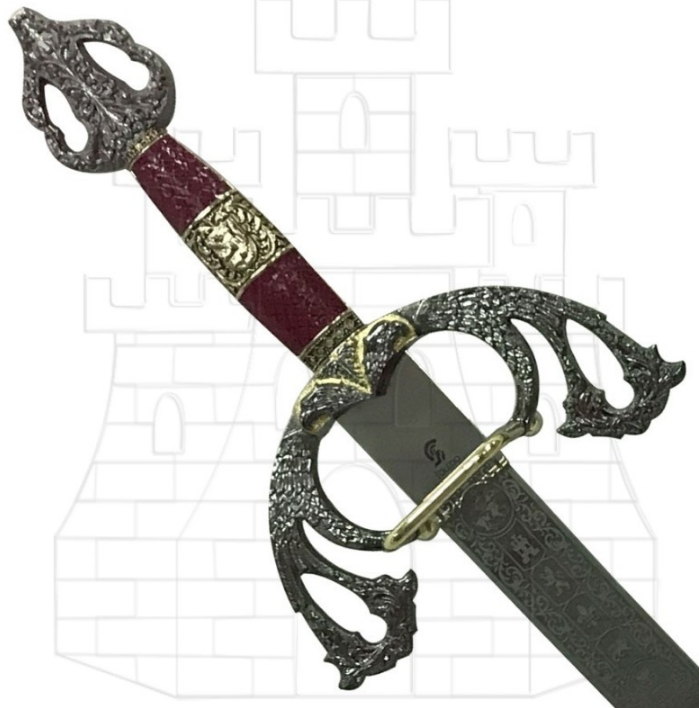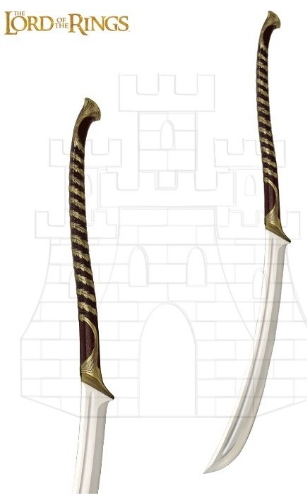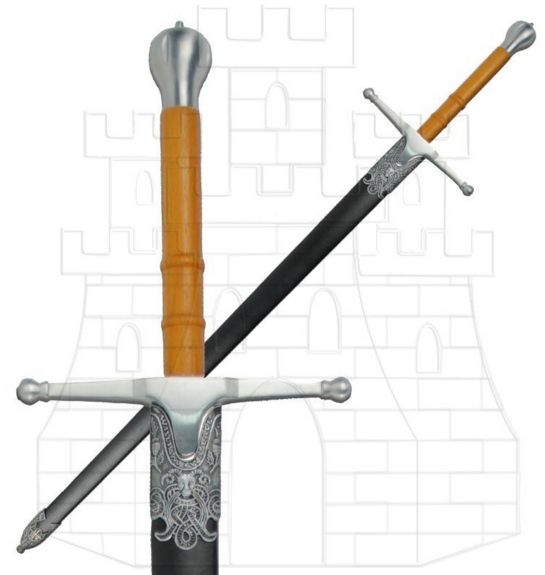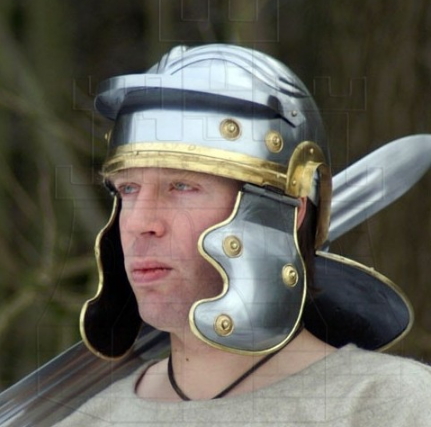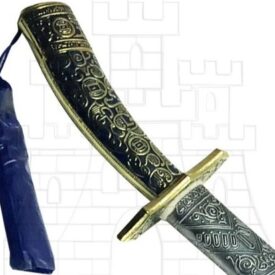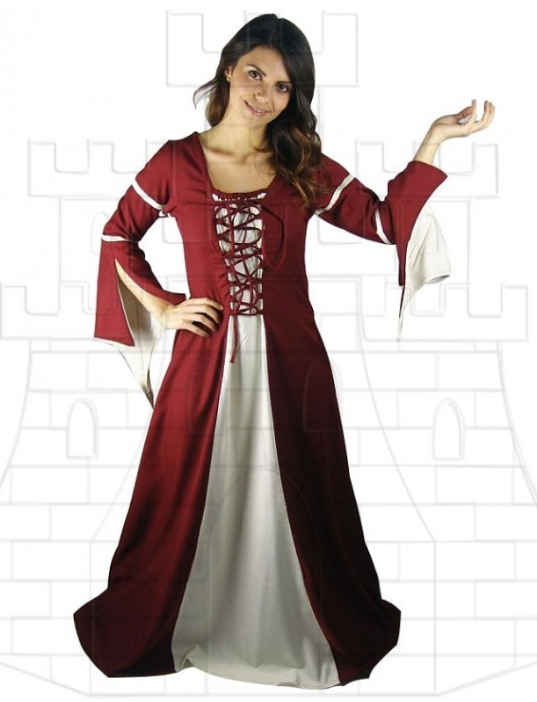The Lorica was the typical armor of the Roman Legions though they didn´t use this name (lorica) for their armor, in fact, it is unknown how it was called. The name “lorica segmentata” (sectioned armor) is used since the sixteenth century, but the Roman legions used this type of armor since the late first century BC.
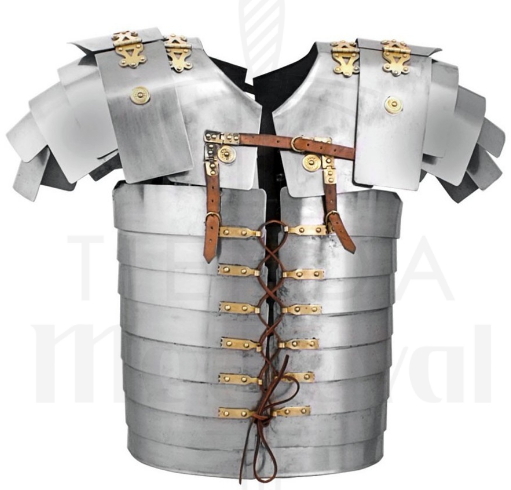
It allowed greater flexibility than the rigid form of body armor as it consisted of four principal elements or units (one for each shoulder and one for each side of the torso) divided in several metal strips (usually iron) that were arranged on the soldier’s body horizontally, around his chest and back. Were attached inside through vertical leather bands, which were fixed to each of the metal strips. The armor could be opened from the side so that the soldier could remove it. Also consisted of other upright metal strips that were placed on the shoulders and protected them. The arms were unprotected, although this was not of great importance, since in compact formation, the shield is carried in left and gladius, unsheathed on the right, next to the hip, thus being both protected.
The lorica segmentata was an engineering masterpiece of the legions. Believe it or not, one of its advantages is that easily dismounted by loosening the buckles and leather strips closures. Also, was kept in a small space which helped in transportation. Regarding functionality, is more comfortable than other medieval armor created in later centuries. His cassation came not so much for its effectiveness but because of the decline of the Roman legions.
TYPES OF LORICA SEGMENTATA
The Kalkriese: This version is based on the archaeological reconstructions of a variety of fragments, focused largely on the breastplate found in Kalkriese (Germany) in 1994, where the Legionaries of Carnuntum camp was located. This type of lorica was used since 20 BC until 50 AD.
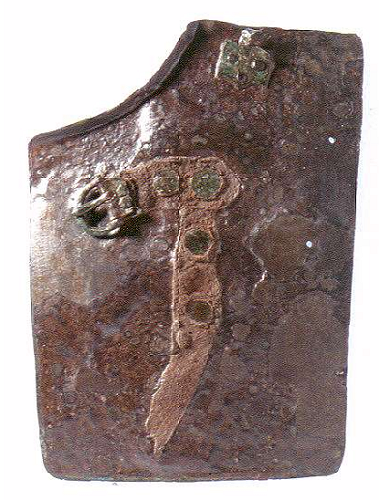
The Corbridge: This style of armor is composed of four basic assemblies – two “collar-shoulder” halves and two “torso-girdle” halves. Note that all the components are connected by leather straps and buckles. This was the first style of lorica segmentata armor and was the most comfortable to wear. It was also more complicated and difficult to assemble, being composed of about 40 separate plates.
The first recorded excavated examples of this type were found in the Carnuntum Waffenmagazin deposit,where a range of parts from both lower and upper units was discovered.
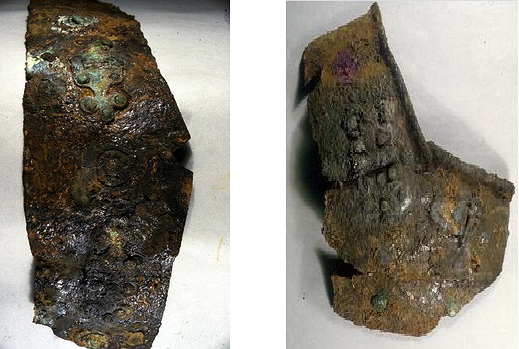
The Newstead: the type-find itself was discovered in 1905 when James Curle was excavating in the well within the headquarters building at Newstead, though very fragmentary and incomplete. During the second half of the 20th century, finds of segmental armour began to be made north of theDanube; although limited in number, they contained recognisable fragments of Newstead-typearmour.
The Alba Iulia: Apparently it was a variant of the other loricas segmentatas. This form of the cuirass is known only from the high-relief sculpture found at the legionary base of Alba Iulia in Romania.
Due to its particular structure, the construction of the lorica segmentata required more experience of the blacksmith and therefore cost more money. This is due to the fact that between the second and third centuries, due to constant economic crises, this type of armor disappeared and Roman troops would switch to only wear chainmail, or would stop carrying protection, causing greater vulnerability of the army, in a period during which the barbarian invasions were very numerous.
